Inside Bill de Blasio's Shadowy Secret Stealth Transition Team
“Bill de Blasio has two transition teams. There’s the public one, announced in late November. It’s a diverse, 60-person assortment of nonprofit leaders, political types, educators, rabbis, Cynthia Nixon. More than half of its members are de Blasio donors. Then there’s another team, a nonprofit group whose participation in the process has never been announced, but which has been playing a substantial role in organizing the transition.”
The Insane Whole Foods Gowanus Is Open For Your Gentrifying Needs

The Gowanus Whole Foods opened this morning, at 3rd Avenue and 3rd Street in Brooklyn (midway between Park Slope and Carroll Gardens, for you Manhattanites), with a bench-laden parkway along the Gowanus Canal, a hot hipster-manned knife-sharpening station, copious espresso machines, a giant over-sized novelty baguette (WHY IS THIS BREAD SO BIG?), giant hanging hogs, a rooftop beer garden, an enormous greenhouse, and just more of everything than you can possibly imagine. It was mobbed with shoppers within minutes of opening.
Much yogurt. So organic. Wow. Etc.
Just pretend there are stupid captions on each of these photos that are like “Wow the doors slide open when you approach but then close behind you as if by magic.” And “there are a large number of all kinds of people waiting behind cash registers”! But yeah. You’ve been to a Whole Foods before. It has food in it. (My God, it’s full of food.) Although perhaps you haven’t been to a Whole Foods with a beer tap room and a lovely meandering parkway alongside a toxic canal….


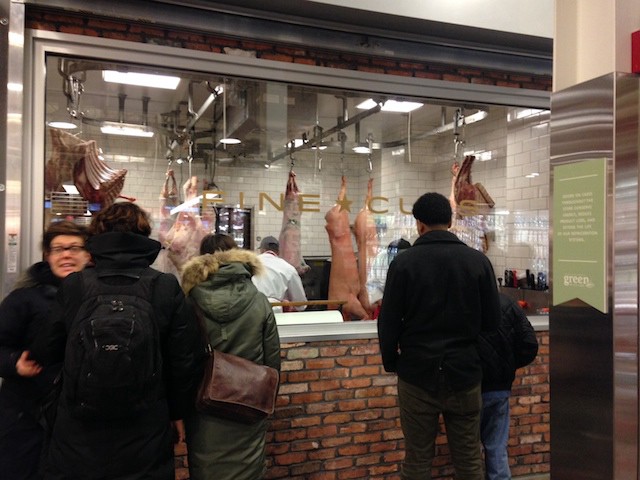





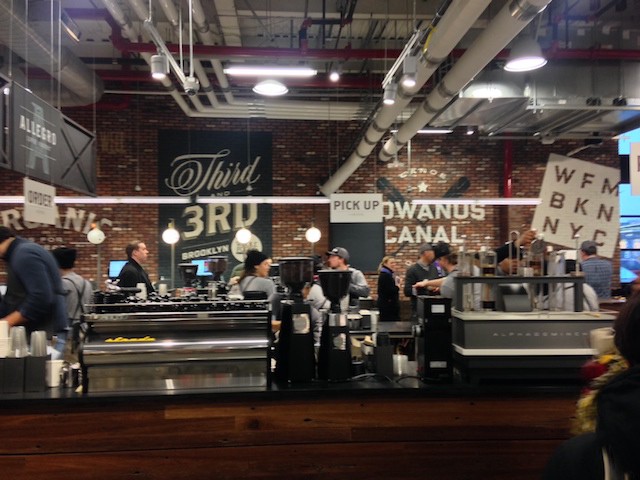
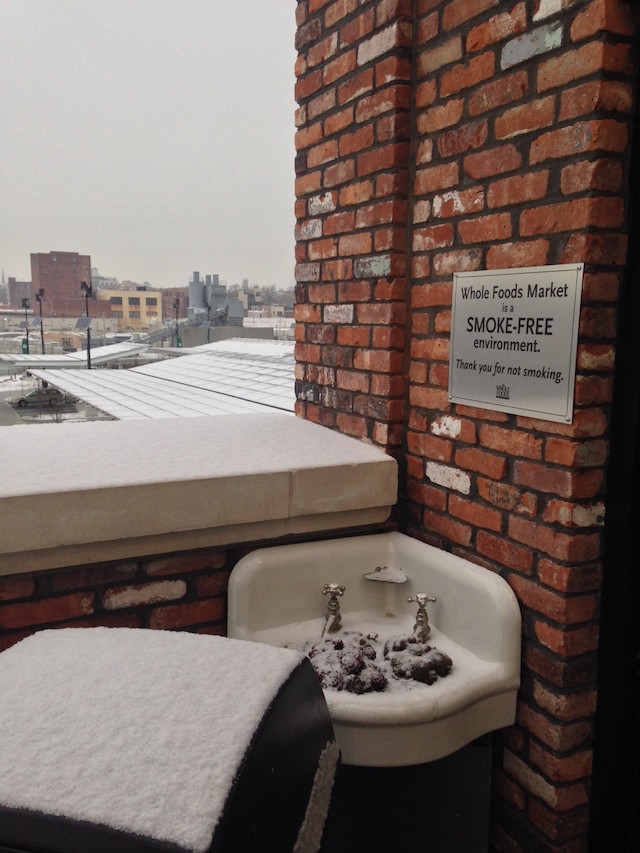

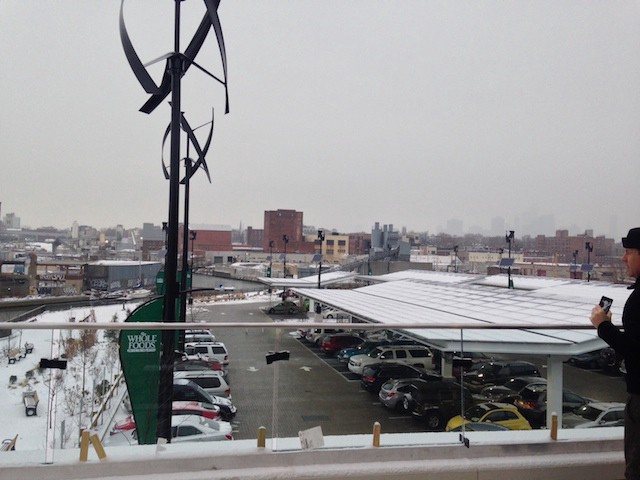







What Do Vitamins And You Have In Common?
Vitamins are worthless and don’t do anything to make you even a little bit better, but the alternative is “not smoking, eating well and getting adequate exercise,” so it’s probably just easier to keep throwing money away and kidding yourself that the supplements are working. You realize you’re going to die either way, right?
Ray Price, 1926-2013
“Country Music Hall of Famer Noble Ray Price, who pioneered a shuffling, rhythmic, honky-tonk sound that has had an impact on country music since the mid-1950s, died Monday, Dec. 16, confirmed Bill Mack, a spokesman for the family…. Through hits including ‘Crazy Arms,’ ‘City Lights,’ ‘My Shoes Keep Walking Back To You’ and many others, Mr. Price’s full, round voice became one of country’s most beloved and instantly identifiable instruments. His expansive musicality allowed him a 65-year career that changed country music and inspired artists including Willie Nelson, George Jones, Merle Haggard and Waylon Jennings.” If you’re looking for a good place to start this is about the best collection of the early stuff you’ll find. Price was 87.
Beyonce Feminism Debate Resolved
“A deeply personal Beyoncé debate: Should she get to be a feminist?” I know none of these things are ever fully settled until an older white man weighs in, so let me provide some authority and finality to this deliberation by asserting that, sure, why the hell not, Beyoncé gets to be a feminist. Now you may go back to your lives, we have spoken.
Man Acquires Money, And Then Houses

Today’s least offensive Times op-ed (we can’t even talk about this) begins like this:
Just five years ago, Adam Fleischman was in a two-bedroom rental with his wife and their year-old son, fumbling around for a career that might stick. Screenwriting hadn’t worked out. Same for finance. He was 38 and, he told me, “It was do or die.”
Today he owns two houses here, one with six bedrooms and a makeshift vineyard out back. He said that he’s toying with the idea of a third in London.
That’s about the founder of Umami Burger, but: it seems like that’s all people can think to do when they get some money. Six bedrooms? Two houses in the same city? Like great, buy a nice house, sure, but…. Maybe it’s just because it’s snowing and it’s almost Christmas and I’m feeling sentimental but I just found this incredibly dispiriting. Hashtag capitalism.
What Happens To Queens?
by Tom Lisi
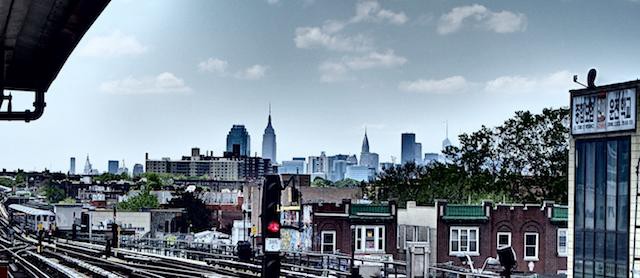
While we’re all assessing the Bloomberg legacy, we should remember a wonky but big part of the city’s transformation in the last dozen years: the rise of the Business Improvement District. Of New York City’s 68 BIDs in operation today — the latest being the hard-fought SoHo BID — 24 were founded since 2002. The BID model runs the gamut from corporate-financed midtown groups, like the 34th Street Partnership, to smaller outer-borough associations that pool money for holiday lights and maybe pay for some extra street cleaning and trash removal. They have taken up roots and cleaned up their areas — and now several are looking to extensively widen their borders, including one in Jackson Heights, Queens.
In terms of the large-scale private development for which Bloomberg will be remembered, Queens quietly chugged along while Manhattan and Brooklyn exploded. But, in the last few years, the approval of the thousand-unit 5Pointz luxury towers, the Willets Point mega-huge mall, the 7 train extension, and the USTA Tennis Center expansion have changed all that. New construction permits in Queens have outpaced permits in Brooklyn in two of the last three years.
The vision that developers and City Hall have for Queens it still a little difficult to decipher, but one thing is for sure: they want people taking the 7 to that enormously huge mall. (How huge? The mall is approved to be 1.4 million square feet.) At the same time, the proposed additions to a small BID would acquire a large portion of one of the most economically viable areas left in Queens: it extends 20 blocks from 82nd Street into Corona, and stops close to the Willets Point project site. (Previously, it went 10 blocks further, up to 114th Street, before planners found out the stretch was mostly residential.)
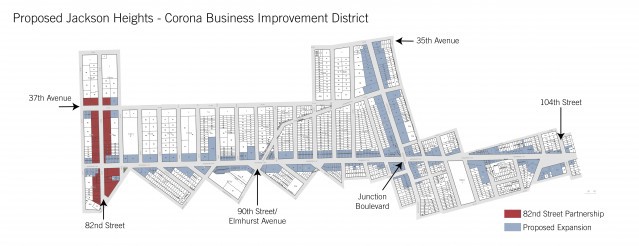
The area is one of the densest commercial corridors outside Manhattan. Spearheaded by the 82nd Street Partnership — that’s landlords, a bank, and outgoing Comptroller John Liu, basically — the proposal would expand the organization from covering a bit more than 100 businesses to perhaps 1,000.
On paper and in before-and-after pictures, the BID model seems like a fairly straightforward, pro-neighborhood godsend. “BIDs are completely locally driven initiatives — property owners, business owners coming together and wanting to do more for their commercial corridors to make it a cleaner, safer, better place to do business,” said Kris Goddard, executive director of the Neighborhood Development Division of the city’s Small Business Services. His job is to make BIDs happen.
And while BIDs do provide their small businesses with valuable services, they answer to landlords — and to City Hall. The ambitious Jackson Heights BID expansion plan originates from Council Member Julissa Ferreras and SBS Commissioner Robert Walsh, who recruited Seth Taylor as the executive director of the 82nd St. BID. Formerly of the Union Square Partnership and Downtown Brooklyn Partnership, Taylor almost immediately changed the group’s name to include the word partnership. A year later, Ferreras and Commissioner Walsh unveiled the expansion plans to the public.
Ferreras is looking to totally revitalize the corridor with her “New Deal for Roosevelt Avenue”; Taylor’s leadership on the BID is an important piece. The BID “deepens their roots into the district; by investing in it they become stewards of the neighborhood, they become more involved in the planning and the decision-making about the future of this commercial corridor,” said Taylor.
There’s no getting around that the corridor’s overflowing trash cans and sidewalks caked with dried pigeon droppings fallen from the train tracks are not popular features for local residents or commercial developers. The bane of local politicians are the infamous chica chica cards, handed out to passers-by. As you get away from the 74th Street subway hub and closer to Corona, vice is common, some of it spillover of criminal activity originating overseas.
Even so, with the Willets Point project, and the encroaching economic vitality of Chinese-dominated Flushing, the investment potential on Roosevelt Avenue is enormous. “Roosevelt is not a goldmine, Roosevelt Avenue is a rough diamond. Once it’s polished, it’s going to be priceless,” said Eduardo Giraldo, an insurance broker for businesses in Jackson Heights, and former vice president of the Queens chapter of The Hispanic Chamber of Commerce. Giraldo lost to Ferreras in the district’s 2009 Democratic primary race for city council and though he is a de facto leader for the mostly-Latino constituency of small business owners in the area, he seems to keep losing friends in the controversies surrounding the borough.
Historically, Giraldo is not necessarily anti-private development — he’s previously come out in support of WalMart coming to New York, and also tried to pick a fight about the city’s alleged mistreatment of Willets Point residents in their relocation efforts, calling the locals’ existence “modern slavery” in the New York Times. On the BID, he’s not entirely opposed, but says the version being touted by Taylor is designed to clean out the corridor for national chains. He wants a provision in the BID that mandates a third of its 1,000 businesses be minority-owned. “If we can get that, that’s a big win for us,” he said.
In interviews, Taylor and and Giraldo have both tried to discredit one another as myth-makers. Taylor says the BID is specifically designed to help the mom-and-pop businesses compete, and has not even heard of Giraldo’s proposal. “It’s not even within the realm of what a BID can do. That would take legislative action,” Taylor said. He is also dealing with the Roosevelt Avenue Community Alliance, an organization of local businesses that are fervently against the BID altogether. Their view is that a BID is just a way to fast-track gentrification.
Getting overall support from current business owners has required a bigger-than-expected outreach campaign from the 82nd Street Partnership. The business owners get to vote on the plan in a ballot that Taylor says will go out in early 2014. “Roosevelt Avenue is very disorganized in a number of ways,” Taylor said. “The business community has not been organized. The public spaces, you haven’t seen a lot of investment in them. So this is an opportunity to organize the business community, to create a vision for the future of the neighborhood, and to invest and implement that vision.”
The proposal is certainly a no-brainer for landlords who will likely reap the benefits faster than anyone. They can also pass the BID’s assessment fees over to the tenant’s rent. A couple of the locally strong real estate firms, including TZM and Lewis & Murphy, are at the table for getting the BID expansion in place, but many of the storefronts have been owned by the same family for generations. There’s also the odd business owner on the strip who managed to save and buy their storefront at the right time.
Given what the BID intends to do with the assessment money — provide better lighting, remove graffiti, make more outdoor spaces and events — it’s easy to see how yet again how a BID will lead to greater desirability, and leave a lot of the small businesses that provide services to the largely immigrant populations in the dust. Cue Chipotle.
To add to the confusion, Make the Road New York, an immigrant advocacy group with two members on the proposal’s steering committee, has come to the aid of Taylor’s outreach efforts, but has not come out publicly one way or the other on the expansion plan and declined requests for an interview. “They want to make sure, like us, the business community has all the information that they need to have to make an informed to decision. Once they gauge how their members stand on this, they may come out and publicly support this proposal,” said Taylor. They may.
Community members who look at the BID with skepticism hold out some hope that the incoming de Blasio administration might halt the momentum of 82nd Street. Ferreras is a member of the ever-strengthening City Council Progressive Caucus, and with an unorganized, politically quiet immigrant constituency, she serves her district with a lot of leeway. Unlike SoHo, it could happen fast. Taylor said that if the proposal gets enough support from the community in the mail-in vote, the process of approval and implementation could take as little as nine months.
Tom Lisi is a writer and comedian in New York. He lives in Queens. Photo by The All-Nite Images.
What's Left Of Pop Music In The Miley Era?
In the shower I listen to Kiss 108, Boston’s Clear Channel-operated pop station, a fair amount, and so in addition to hearing the vowel-crazed Justin Timberlake/Jay-Z collaboration “Holy Grail” a lot I have been subjected to ads for the station’s Jingle Ball, which took place at the TD Garden this past Saturday. Miley Cyrus was the scheduled headliner; the bill also included Enrique Iglesias, Paramore, Selena Gomez, Flo Rida, Fall Out Boy, Robin Thicke and Fifth Harmony. (Each year, a cast of Clear Channel-approved pop stars whips through the country’s biggest markets, with lineups growing and shrinking in accordance with each city’s prestige level.) I was pretty excited; the Boston lineup had three of my favorite artists of 2013, and the show itself would serve as a chance for me to take the temperature of the pop world in a place away from Twitter — or at least in a different slice of it.
To attend a Jingle Ball is to put yourself at the mercy of Clear Channel and its sponsors for a solid four-hour block. Booths touting lip gloss and hair chalk line the hallways; Tweets stream above the stage; screams emanate from all around you at odd moments. Certain acts might only get a song or two to make their case. Videos play between sets — full songs, advertisements, interstitials where people who might be playing other Jingle Balls in other cities make nice with the hosts. Last year, I saw the show in New York, and One Direction kicked things off; this year, the keenly Internet-aware boy band only appeared on screen, although each time they did, the audience was enraptured. (Austin Mahone, an up-from-YouTube teen idol who inspires fierce clicking devotion among his “Mahomies,” was also only in Boston via pre-taped segments, although the screams in honor of One Direction were absolutely louder.)
The night before, in New York, the Jingle Ball bill had included Mahone, as well as Macklemore & Ryan Lewis (who had the No. 1 single on 2013’s Hot 100, the smugly cheap “Thrift Shop,” as well as another track in that chart’s top 10) and Pitbull. The latter was introduced by R. Kelly. Of course, a Jingle Ball is always a partial experience as far as it being an overview of pop. Major stars who released albums in 2013 were absent entirely — Lady Gaga, Katy Perry. Taylor Swift and Lorde were partying in an entirely different hemisphere. Rihanna was in an undisclosed location, although she had the Christmas spirit. And then there was Beyoncé, whose album had provided the Internet with a jolt when it came out 36 hours prior — although she’s not as prominent on the increasingly white-bread radar of top-40 stations like Kiss 108, as her most successful singles from “4,” her last record, had only brushed the bottom of the Hot 100’s top 20.
First on the bill was Fifth Harmony, a five-piece girl group assembled by the American version of Simon Cowell’s post-Idol talent search “The X Factor.” The pop girl group prototype hasn’t really done too well over here since the Pussycat Dolls’ second record fizzled, but Fifth Harmony — who finished third on the show’s second season — seem to be taking the long, slow road to cracking Top 40 radio. “Miss Movin’ On,” their first single, bites part of the hook from Kelly Clarkson’s “Since U Been Gone” and chews it up in service of a similarly triumphant breakup song; they gel well on stage and their voices blend nicely on their big-tent choruses. “Don’t Wanna Dance Alone” has a spring that borrows directly from “1999,” and who’s going to argue with that kind of inspiration?
Robin Thicke was next, although his stage time was limited to two songs and a little bit of banter. He seemed to be on a well-deserved “Look, Ma, I Finally Crossed Over And I Only Had To Be Misunderstood A Lot To Do It” victory lap. (“Blurred Lines” was the Hot 100’s No. 2 song of the year.) I kind of wished he’d had a chance to slow it down and do his sumptuous post-fight-sex track “Love After War,” or maybe cover Al Green like he did when I saw him perform at the Qream launch party. “I wonder who Miley’ll be twerkin’ on tonight,” Thicke glowered; it would have been more amusing, maybe, if I hadn’t heard that he’d said the exact same thing at a previous Jingle Ball, although the resemblance between his speaking voice and that of his father’s is startling. It was at this point, too, that I realized that pretty much all of the acts on the night’s bill had their origin points in the late 2000s, at the earliest; even Fifth Harmony had older roots, having been birthed by “X Factor,” which began airing on TV in the UK in 2004.
I have written about the Chicago-bred act Fall Out Boy (debut album: 2003) a lot, like a lot a lot, and, hey, why stop now. The way they’ve refined their pop-rock over the seven years that I’ve been paying closer (by which I mean “deeper than a snarky blog post about guyliner”) attention has been pretty astonishing, and their 2013 album “Save Rock And Roll” is simultaneously grandiose and self-effacing, a balance that’s as attributable to Pete Wentz’s knowing lyrics as it is to Patrick Stump’s transformation into a swaggering frontman. (Guitarist Joe Trohman and drummer Andy Hurley are also monstrous musicians.) Jingle Ball was the fourth time this year I got the chance to see them, and the second time I did so in a venue that normally hosts basketball games; the last Fall Out Boy concert I’d attended was at Chicago’s Metro, where they blasted through the other album they recorded this year, the Ryan Adams-assisted tribute to their punk roots “PAX AM Days,” before tearing into the rest of their back catalog. On Saturday, their six-song set was truncated to their biggest hits, including the delirious “Dance, Dance,” and songs from the new record, like the stadium-sized yet intimate “Alone Together.” They had pyro (how better to accentuate the fiery bits of “My Songs Know What You Did In The Dark (Light ’Em Up)”) and an inspirational speech courtesy of Wentz, and basically compressed all the necessary elements of an arena-rock show into less than half an hour.
Flo Rida came next, and the most notable things about his set were: 1) the way he brought out a Santa who was not white, which perhaps inadvertently injected a little bit of anti-Fox News politicizings into the proceedings; and 2) my realization that he was probably, in terms of pop radio anyway, one of America’s most popular rappers. He has a track that samples Brenda Russell, another that uses Avicii’s reworking of Etta James, and another that employs Nina Simone, so at least he is using his powers for good (?). Selena Gomez, who followed, breezed through her set and inspired the first screams that went directly into my eardrum; this happened during the sinewy “Love You Like A Love Song,” which started off as a beautiful ballad before opening up into a midtempo dance track. Her album “Stars Dance” was one of the year’s more disappointing pop releases; from the first track, it sounded enervated, like she missed something. (Perhaps the dynamic of being with a band?) She closed with that record’s big single, the teasing “Come & Get It,” and hopped offstage.
My favorite pop album of the year is Paramore’s self-titled full-length, a romp through ladies-first radio hits that uses Debbie Harry and Like A Prayer-era Madonna as two of its major touchstones. It also has ukulele interludes, the greatest love song about fidelity to hit the airwaves in years, and a big, drony finish. Paramore only got four songs to prove their case, and Hayley Williams used her time as wisely as she could — opening with “Misery Business” and pulling a fan onstage to sing that powerhouse track’s bridge, then going right into the choir-assisted “Ain’t It Fun” and leading the crowd in an extended singalong of the finger-wagging coda. (I am somewhat surprised that “Ain’t It Fun,” which is a broadside against someone unused to “livin’ in the real world,” has yet to be incorporated into some anti-millennial screed, although Williams noted that it would be released as a proper single in 2014. Get ready, pundit class.) Their set ended with the pinging, joyous “Still Into You,” the aforementioned ode to being in love for a while; that it’s fun to sing along with for even those people whose hearts are icy hunks is a testament to its construction, and Williams’ surfeit of charisma.
And then it was time for the other thirty-something man of the evening, Enrique Iglesias. He’s now one of the main dudes providing hooks for skullcrushing EDM pop (also in this category: Ne-Yo), and tracks like the bombastic “Tonight I’m Lovin’ You” seem like they’re a long way from the syrupy “Hero,” although they’re both similarly bludgeoning. Iglesias’s time at Jingle Ball ended with the Lionel Richie-interpolating “I Like It,” not to mention confetti and balloons and the sort of fanfare that normally comes with the end of a show, not the end of a penultimate set.
But! The show was actually over, the Grinch coming early to Boston via weather patterns. This weekend a storm socked the East Coast; the snow started in New York early in the morning and made its way to Boston midway through the afternoon. By the time I made my way to the TD Garden it was sticking — and it had stuck in the New York area enough to result in Miley’s trip to Boston being kiboshed because of “mechanical issues and inclement weather conditions.”
The abrupt end caused chagrin in a lot of people, including I am guessing the kid who I saw waving a homemade foam finger and wearing Mickey Mouse leggings and the other kid who had a homemade #BANGERZ shirt. Truth be told, I was a little bit relieved, if annoyed that the night hadn’t been reworked to give Paramore and Thicke and Fall Out Boy — heck, even Flo Rida — more songs. The sheer tonnage of words written about Miley in 2013 is enough to make even the most well-adjusted person run screaming into the arms of any other cultural era. And what is there even left to say about her at this point, given that the twerking Thicke teased during his set was scheduled to happen on Santa, as it did in New York the night before? This, I realize, is an unpopular opinion to have in the publish-or-perish Internet era. But sometimes you just have to tap out, and I was more than happy to let Miley and the plane that left her stranded at Teterboro do it for me.
My friend and I trudged through the TD Center, past pockets of youth who were yelling either because they were mystified or because they were happy, and walked over to the nearby Onyx Hotel to commiserate — in Boston, after all, there are few better places to mull over a night punctuated by pop that didn’t happen. As we sipped prosecco, a woman near us raved to anyone nearby that Miley was not actually stuck in New York, that she was actually next door (at a bar? Oh, well, maybe). A real-life Miley Truther? I wanted to tell her that in 2013, with an attitude like that, she could have made at least a couple of dollars from studding her theory with GIFs and throwing it up on the Internet, but I abstained.
This morning, as I was performing my toilette, I flipped on Kiss 108. After a lengthy commercial break and a spin of the screechy, irritating Zedd track “Clarity,” the morning show returned for its final segment. Kiss 108’s morning host, Matt “Matty In The Morning” Siegel, is a radio lifer who has a pleasantly grizzled manner, particularly during the 9 a.m. hour — there’s a perceptible letting loose on morning-zoo shows after most kids have left for school, and after most commuters have arrived at work, a charming vestige of the pre-satellite, pre-streaming era. The banter was akin to the sort of low-key murmuring you might hear in the aftermath of a really bad day at the office — references to doors being closed, moods being lowered, people sneaking out early. Matty and his pals played the intro that was to preface Miley’s entrance on stage, which would have been handled by David Ortiz, the hero of the Red Sox World Series run. Over and over they played it, “Miley Cyrus… YEAH! Miley Cyrus… YEAH! Miley Cyrus… YEAH!” They played it on loop until each syllable became its own, recognizable entity — and even though I loved a lot of pop music this year, the GIF-like recursion seemed utterly appropriate for a year when so much culture seemed to be endlessly circular, swirling round and round like it was awaiting the opening of a drain.
Maura Johnston is the proprietor of Maura magazine
and the ILA Journalism Fellow at Boston College.
What Kind Of Liar Are You?
“In a new study, researchers found that people generally fall into three categories: Some are honest most of the time, many are honest about their lying and some people lie a lot.”
Talking Heads Albums, In Order

8. Naked
7. True Stories
6. More Songs About Buildings And Food
5. Talking Heads: 77
4. Fear Of Music
3. Little Creatures
2. Speaking In Tongues
1. Remain In Light
